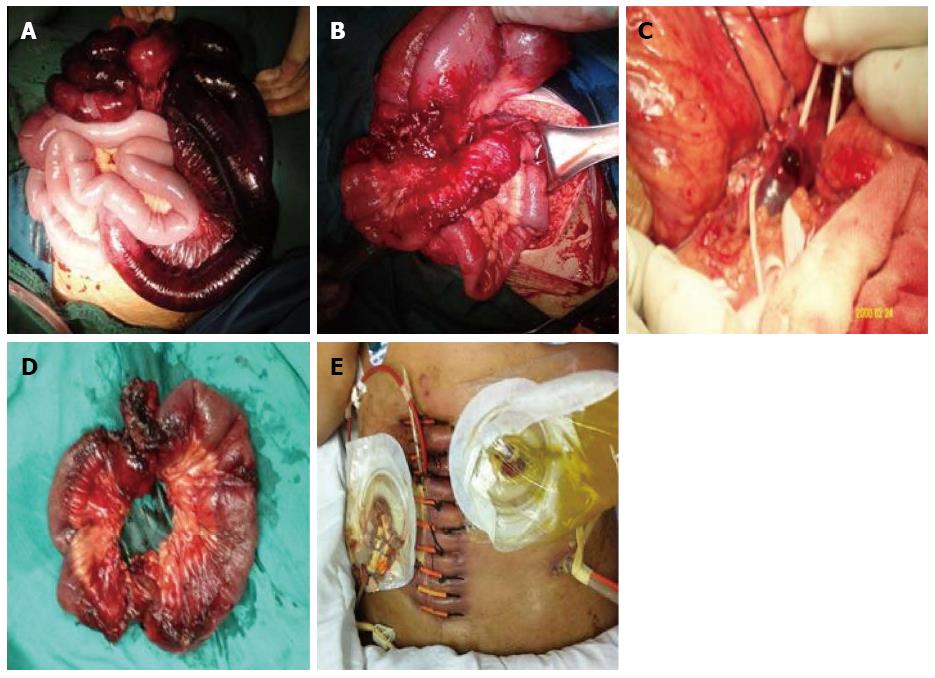Copyright
©2014 Baishideng Publishing Group Co.
World J Gastroenterol. May 14, 2014; 20(18): 5483-5492
Published online May 14, 2014. doi: 10.3748/wjg.v20.i18.5483
Published online May 14, 2014. doi: 10.3748/wjg.v20.i18.5483
Figure 1 Various surgical procedures used to remove the thrombus in acute superior mesenteric vein thrombosis cases.
Intraoperative images are presented from representative cases in groups 1 and 2. A: Extensive bowel ischemia during initial surgery (patient 2, group 1); B, C: Localized bowel necrosis and stricture during delayed operation after transcatheter thrombolysis (patient 3, group 2); D: Intraoperative thrombectomy (patient 3, group 1); E: Jejunostomy plus ileostomy with an open abdomen was carried out in a septic patient at a high risk for post-operative abdominal compartment syndrome and recurrence (patient 3, group 2).
Figure 2 Portal venography results from different modalities used at admission and after thrombolysis.
A, B: Transverse and coronal reformation of magnetic resonance imaging portal venography showed hypointensity in the superior mesenteric venous (SMV) (white arrow) at admission; C, D, F, G: Transverse and coronal reformation on three-dimensional helical computed tomography (CT) portal venography showed a filling defect and refilling in the SMV (white arrow) at admission and after thrombolysis; contrast enhanced CT image showed bowel dilatation, bowel wall thickening, and peritoneal effusion secondary to acute superior mesenteric vein thrombosis; E, H: Portal venography in digital subtraction angiography showed a filling defect and refilling of contrast medium in the trunk of the SMV at admission and after thrombolysis.
- Citation: Yang SF, Liu BC, Ding WW, He CS, Wu XJ, Li JS. Initial transcatheter thrombolysis for acute superior mesenteric venous thrombosis. World J Gastroenterol 2014; 20(18): 5483-5492
- URL: https://www.wjgnet.com/1007-9327/full/v20/i18/5483.htm
- DOI: https://dx.doi.org/10.3748/wjg.v20.i18.5483










